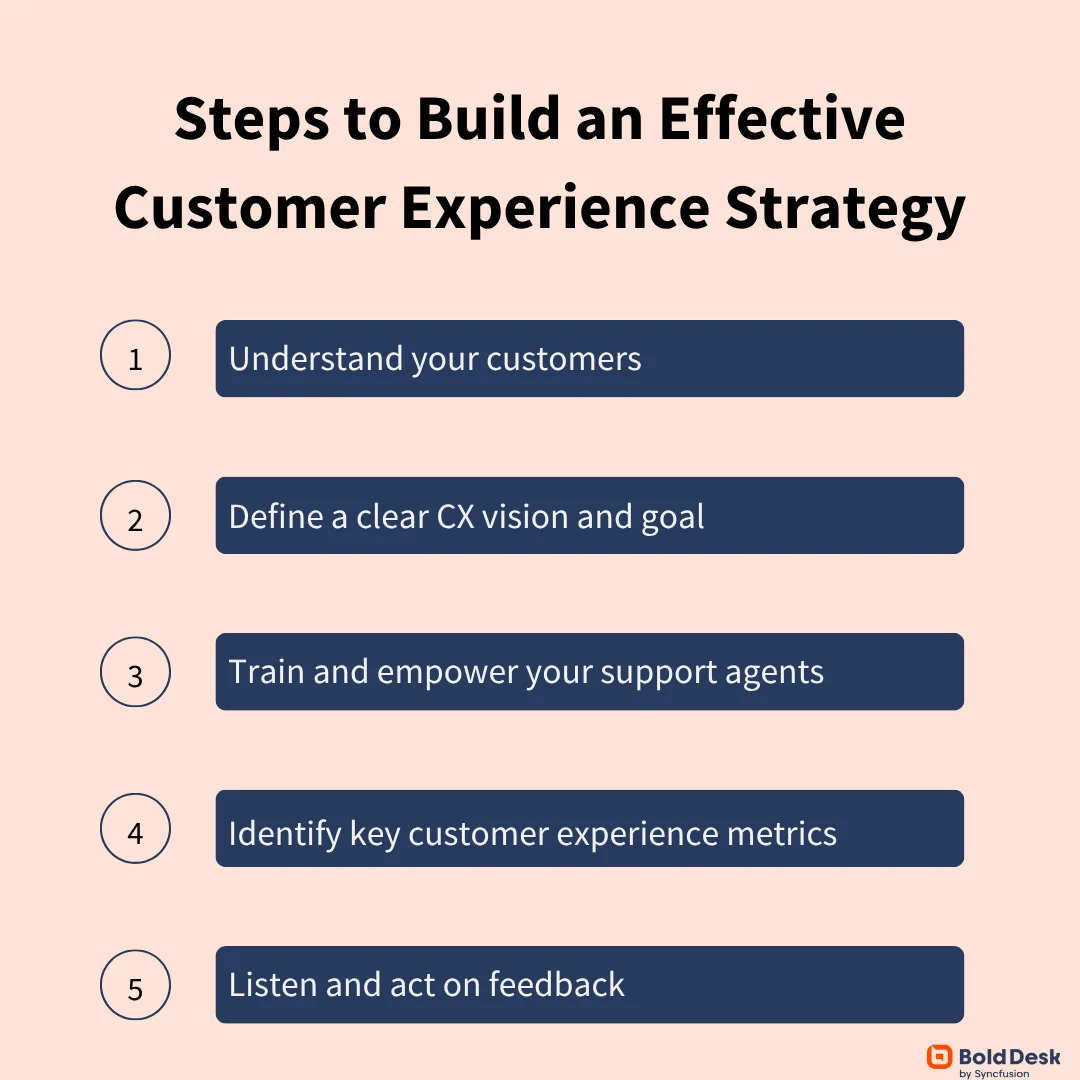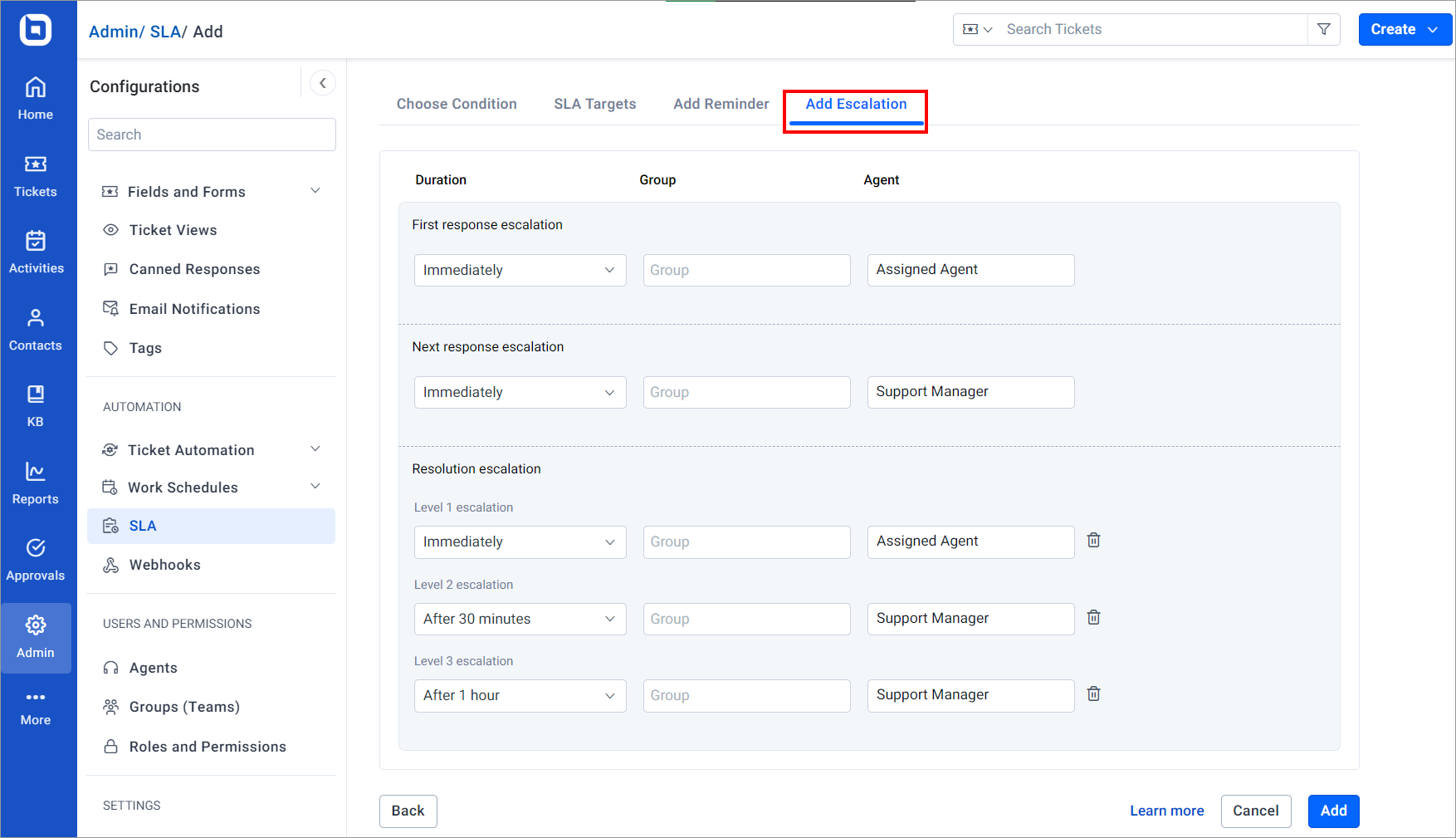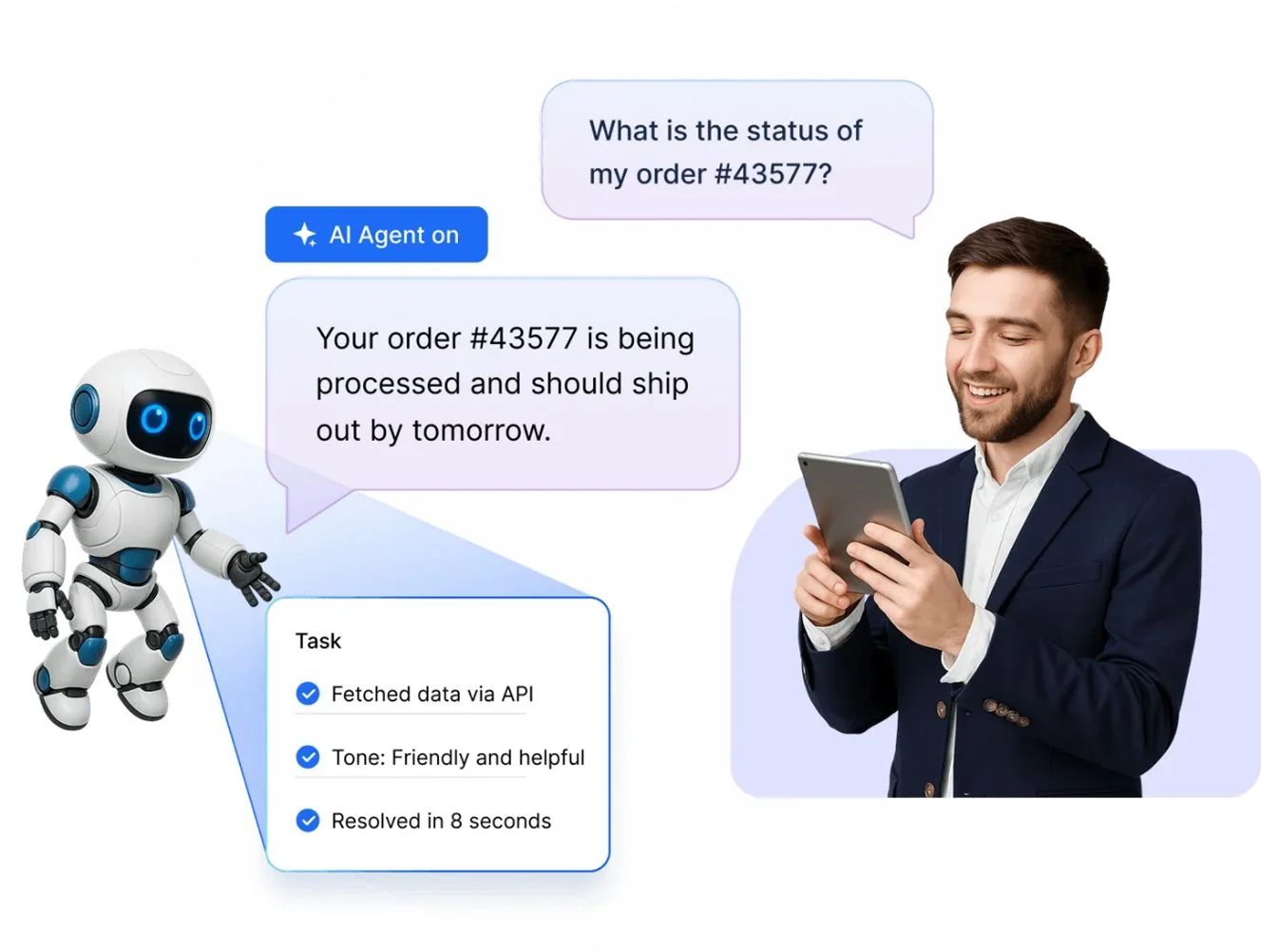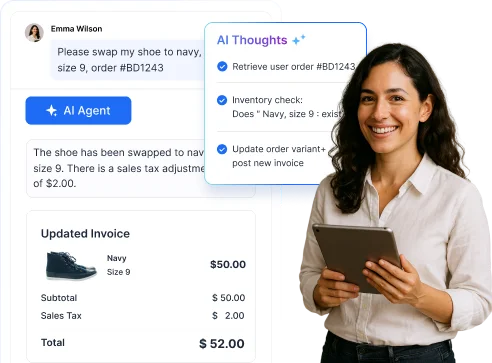For many businesses, customer satisfaction is paramount, and so businesses must meet and exceed customer expectations.
A PwC survey found that 73% of customers consider their experience with a business to be a significant factor in their purchasing decisions.
Therefore, designing a solid and well-considered customer experience strategy is one of the best ways to enhance customer satisfaction, heighten customer loyalty, and increase revenue.
The crucial question remains: do you know how to craft an effective customer experience strategy?
In this article, we’ll explore the key steps to creating a standout customer experience strategy and reveal smart ways to enhance it over time.
What is customer experience?
Customer experience (CX) refers to the overall perception, emotions, and attitude a customer develops toward a brand throughout their entire journey, not just during a single interaction.
It begins the moment a potential customer becomes aware of a business, whether through advertising, social media, word of mouth, or online search.
As customers browse, inquire, and make purchases, their experience with a brand evolves, continuing beyond the sale through post-purchase support and feedback, which are vital in shaping overall customer perception.
What is a customer experience strategy?
A customer experience strategy is a plan that a company formulates to define its interactions with customers across all touchpoints of the customer journey.
This strategy goes beyond merely addressing customer inquiries; it considers every element influencing customers’ overall experience, perception of, and satisfaction with the business.
A CX strategy involves planning to address customer pain points and concerns in various stages, such as:
- The initial business discovery phase
- The purchasing process
- Post-purchase follow-up
Implementing a CX strategy helps ensure every customer interaction is as positive as possible, hence fostering satisfaction and likely future purchases or continued subscriptions.
How to create a good customer experience strategy
Creating a customer experience strategy starts with intention. It’s not just about reacting to issues; it’s about designing every interaction to be meaningful and memorable.
Many businesses recognize the importance of CX, but few understand how to develop an effective strategy. Below are essential steps to create a CX strategy that’s clear, actionable, and built for long-term success.

Understand your customers
At the heart of every successful CX strategy is a deep understanding of your customers. You can’t improve what you don’t understand.
Start by creating customer personas that go beyond demographics. Dive into:
- Motivations and goals
- Pain points and frustrations
- Preferred communication channels
- Buying behavior and decision-making patterns
Then, map the customer journey from awareness to post-purchase. Identify every touchpoint, website visits, live chat, email interactions, and social media engagement, and assess how customers feel at each stage.
Define a clear CX vision and goal
To create a customer experience strategy, start by defining the kind of experience you want customers to have. Your CX vision should reflect your brand’s values and guide every interaction.
Steps to create it:
- Decide what emotions and impressions you want customers to associate with your brand.
- Clarify the promises you intend to deliver consistently.
- Describe how you want customers to talk about their experience with you.
Once your vision is clear, set SMART customer service goals to measure success. For example: Increase NPS by 20% or reduce first response time by 30%.
Train and empower your support agents
Support agents are the face of your customer experience. To create a strategy that works, you need to equip them with the right skills, tools, and authority.
Start with customer service training that focuses on empathy, active listening, and conflict resolution. These soft skills are essential for handling interactions with care.
Ensure agents have a deep understanding of your products or services so they can respond confidently and accurately.
Identify key customer experience metrics
To improve CX, you need to measure it. Metrics provide the clarity and accountability needed to refine your strategy over time.
Track these essential KPIs:
- Customer Satisfaction (CSAT) Score: Measures immediate satisfaction after an interaction.
- Net Promoter Score (NPS): Gauges long-term loyalty and likelihood to recommend.
- Customer Effort Score (CES): Assesses how easy it is for customers to get help.
- First Contact Resolution (FCR): Tracks how often issues are resolved in the first interaction.
- Customer Churn Rate and Customer Retention: Indicates how well you’re keeping customers over time.
Listen and act on feedback
Feedback is the voice of your customer, and it’s one of your most powerful tools for improvement.
According to a Statista survey, 55% of U.S. respondents believe that most brands act on customer feedback.
Use surveys and support data to identify recurring issues, analyze them, and make necessary changes. Ensure feedback reaches the right teams and leads to action.
How to improve customer experience strategy
Creating a customer experience strategy and implementing it isn’t the end of the matter. Managing your strategy is also important for a continuous positive customer experience.
The following are some of the best practices for maintaining and improving your client experience strategy.
Use the right tools
Implementing the right customer service tools also plays a vital role in customer service strategies. For example, by integrating the following tools into your customer service, you can:
- Create, organize, and manage all your support requests in one place, assign them to the proper agents, and enhance team collaboration with the ticketing system feature.
- Develop a knowledge base software to provide your customers with comprehensive self-service options through a centralized repository of information.
- Automatically perform recurrent tasks at each stage of a ticket life cycle and create an operation workflow that is particular to your organization using automation features.
- Use reports and analytical dashboards to visualize meaningful, real-time metrics that aid in understanding and enhancing the customer experience.
Implement omnichannel support
Different customers feel more comfortable using different channels to communicate with companies.
Offering an omnichannel customer experience means you’ll receive customer requests from all communication platforms in a unified inbox for prompt resolution.
Customers interact with businesses through:
- Social media platforms
- Websites and webforms
- Emails
- Community forums
- Live chat
Switching from one channel to the other can be overwhelming for support agents. However, an omnichannel customer service ensures a consistent, seamless customer experience across all channels.
Set an SLA
An SLA should contain an agreement between the support team and customers about how much time ticket responses and resolutions ought to take. It’s important to implement one to:
- Clarify customer expectations and correct them as needed.
- Clarify what you expect of customers, as well.
- Establish fair and measurable standards for your team to meet.
- Set consequences for nonperformance.
- Establish escalation procedures.
Additionally, by implementing an SLA, you promote accountability for your customer service performance, as a result increasing competency.

Create customer feedback loop
Whether positive or negative, customer feedback should be valued and used to improve your business. Therefore, setting up a customer feedback loop is important.
With an effective customer feedback loop, businesses can gather and analyze customer feedback to create effective follow-up strategies and enhance the overall customer experience.
Successfully creating and closing a customer feedback loop demonstrates to customers that their views are respected and appreciated, creating a better reputation.
Leverage artificial intelligence
Artificial intelligence (AI) is the ability of computer systems to simulate human skills and expertise.
AI can analyze customer tickets to understand the intent and emotions behind feedback through sentiment analysis.
In addition, you can utilize AI agents to handle common queries, guide users through workflows, and escalate complex issues to human agents. At the same time, AI Copilot can support your team with real-time suggestions and content enhancements.

Additionally, AI assist features can summarize, rephrase, and correct grammar in your agents’ responses, making them sound more professional.
Evaluate your customer experience metrics
Regular evaluation of customer experience metrics, such as net promoter score (NPS), customer satisfaction score (CSAT), and customer effort score (CES), can provide insights into how well your business is meeting customer expectations.
Hence, you need to regularly evaluate your customer experience metrics. This will help you identify areas for improvement and also gauge the success of your implemented changes.
Conduct regular team training
According to Devlin Peck, 45% of workers are more likely to stay in their role if they receive training.
Regular training ensures your team has the skills and knowledge needed to deliver excellent customer experiences.
It helps agents handle different customer scenarios, adapt to new tools, and stay informed about evolving products or services.
Training also offers fresh perspectives on solving customer issues, ultimately improving the efficiency and effectiveness of your support team.
Personalize your customer service
Personalized customer service can significantly enhance the overall customer experience. Here are a few effective ways to personalize your interactions:
- Use customers’ names in correspondence.
- Remember their preferences on your site.
- Provide tailored product or service recommendations.
- Interact in a friendly, human tone rather than sounding robotic.
- Collect and securely store relevant personal data.
- Offer solutions that are customized to individual needs when appropriate.
By making your service feel more personal, customers are more likely to feel seen, valued, and understood, leading to stronger relationships and greater satisfaction.
Benefits of customer experience strategies
Implementing a well-crafted client experience (CX) strategy in your customer service operations offers a wide range of benefits that directly impact business growth, customer satisfaction, and operational efficiency.
Below are key advantages:
- Increases brand reputation: A customer-centric approach that goes beyond expectations helps build trust and credibility, making the brand more appealing to new users who appreciate great experiences.
- Improves customer engagement: Multiple communication channels, such as social media and email, along with customer feedback loops, help businesses connect more deeply with customers, strengthen relationships, and gain insights to refine their offerings.
- Reduces the cost of service and marketing: Positive customer experience strategies help reduce service and marketing costs by minimizing product returns, customer complaints, and support needs, while satisfied customers naturally influence others through their shared experiences.
- Increases customer loyalty and retention: Exceptional experiences encourage repeat business and turn loyal customers into brand advocates, driving long-term growth and amplifying brand visibility through word-of-mouth referrals.
Elevate every interaction through a thoughtful customer experience strategy
Having a well-crafted customer experience strategy is key to company growth. Having easy-to-use support software with all the features you need is a major component of that strategy.
Therefore, you should try BoldDesk, a powerful help desk software that helps you understand your customers’ needs, expectations, and experiences through features like AI-powered ticketing, sentiment analysis, automation rules, customizable workflows, and real-time reporting.
To learn more about BoldDesk, don’t hesitate to contact our BoldDesk team. Feel free to leave a comment sharing your thoughts or questions.
Related articles
- Customer Service vs Customer Experience: Key Differences
- How to Improve the Customer Experience: 12 Techniques
- 7 Best Ways to Utilize AI for Customer Experience
Frequently Asked Questions
Businesses can enhance the customer experience by using automation, offering self-service solutions, proactively anticipating customer needs, personalizing interactions, aligning teams around a shared CX vision, and continuously innovating through feedback and experimentation.
A customer experience management strategy helps monitor, analyze, and improve every customer interaction, leading to higher retention and brand loyalty.



















 Email Ticketing System
Email Ticketing System Shared Inbox Software
Shared Inbox Software Multi Brand Help Desk
Multi Brand Help Desk Internal Help Desk Software
Internal Help Desk Software Trouble Ticketing Software
Trouble Ticketing Software Mobile Help Desk
Mobile Help Desk 
















